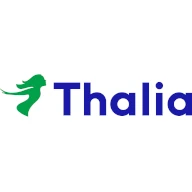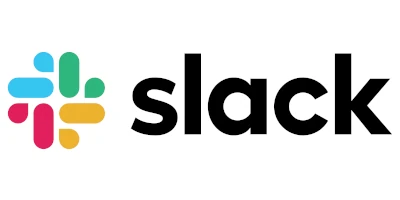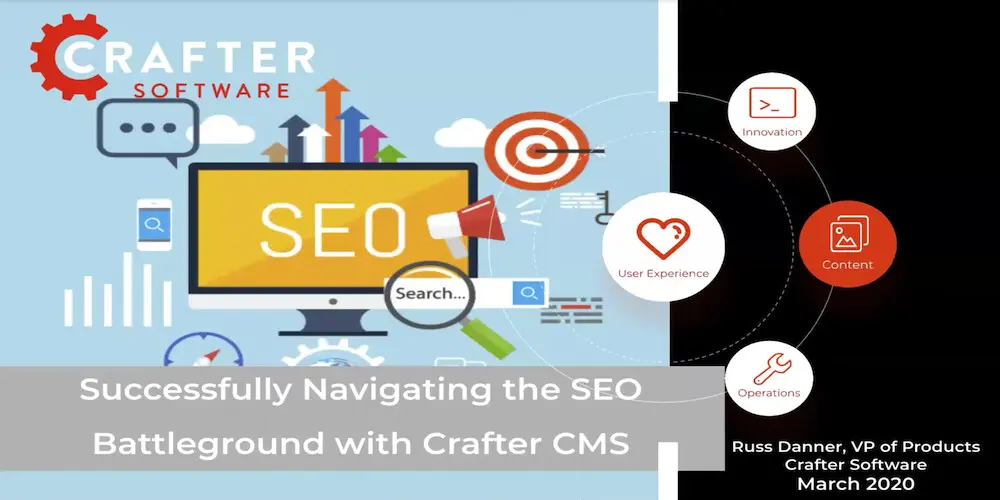Generative Engine Optimization (GEO): The New Frontier of Web Visibility in the Age of AI

Sara Williams

For the past two decades, search engines like Google have been the dominant way people discover information online. But that’s changing, and fast. Increasingly, users are turning to AI-powered tools like ChatGPT, Claude, and Perplexity to get direct answers, summaries, recommendations, and even creative inspiration. These tools don’t just point you to a list of blue links, they generate responses based on everything they’ve learned across the web and other sources.
This shift represents a seismic change in digital behavior. Instead of optimizing content to rank on the first page of a search engine, the new challenge is getting your content included in the AI’s answer. Users are skipping the click. They ask a question and receive a synthesized, conversational response, and often without visiting the original source. In this world, content still matters, but visibility now depends on how well it’s represented in generative models and retrieval systems.
What Are Generative Engines?
Generative engines are a new class of AI-powered tools that use large language models (LLMs) to synthesize information and generate human-like responses. Unlike traditional search engines that index pages and return links, generative engines ingest vast amounts of data including text, documents, website content, among others and generate answers using complex reasoning, summarization, and pattern recognition.
Some of the leading generative engines today include:
-
ChatGPT (OpenAI)
-
Claude (Anthropic)
-
Gemini (Google)
- Llama (Meta)
-
Perplexity (a search-style LLM interface that often includes citations)
-
Microsoft Copilot (powered by OpenAI models and Bing search)
These tools use a variety of techniques to generate responses:
-
Embeddings and Semantic Search: Represent chunks of content as vectors in high-dimensional space for similarity-based retrieval.
-
Pretraining and Fine-Tuning: Ingest data from the public web (e.g., Common Crawl, books, Wikipedia) to develop general knowledge, then refine with task-specific data.
- Retrieval-Augmented Generation (RAG): Combines LLMs with real-time search over an indexed knowledge base (like a vector database).
Crucially, generative engines rely not just on what content says, but how it’s structured, presented, and referenced. That’s where Generative Engine Optimization comes in.
What Is Generative Engine Optimization (GEO)?
GEO Definition and Core Goals
Generative Engine Optimization (GEO) is the emerging practice of optimizing your digital content so it’s discoverable, understood, and used effectively by generative AI systems.
Where traditional Search Engine Optimization (SEO) is about improving your rankings in search engines like Google, GEO is about increasing your content’s likelihood of being cited, paraphrased, or represented in AI-generated answers.
The core goals of GEO include:
-
Making content more machine-readable and retrieval-friendly
-
Structuring and formatting content for maximum relevance in AI queries
-
Enhancing authority and trust signals to influence AI confidence in using your material
-
Creating a broader surface area for inclusion across diverse queries and contexts
Importantly, GEO isn’t a replacement for SEO; it’s a complement. While SEO focuses on click-through rates and web traffic, GEO expands your influence into the AI-powered experiences that are rapidly becoming the default for many users.
Why GEO Matters for Brands and Publishers
In an era where more and more users “ask an AI” instead of searching the web, brands that aren’t represented in generative responses risk becoming invisible. GEO ensures your organization has a voice in the conversation, even when no one clicks a link.
Here’s why it matters:
-
Own your narrative: If you don’t optimize for inclusion, someone else’s summary (or the AI’s hallucination) may define your brand.
-
Establish expertise and authority: LLMs are more likely to include content from trusted, clear, and authoritative sources.
-
Drive indirect traffic and awareness: While many users won’t click, some engines (like Perplexity) do cite sources, and branded mentions can lead to recognition and organic discovery.
-
Stay competitive: Early adopters of GEO will have a first-mover advantage as AI discovery becomes more prominent across customer journeys.
Think of GEO as the new PR for the AI age: shaping what’s said about your brand in the most widely consulted, and fastest growing, information systems in the world.
How Generative Engines “See” Your Content
To optimize for generative engines, it's essential to understand how they perceive, access, and prioritize your content. Unlike traditional search engines that rely heavily on keyword matching and backlink profiles, generative engines “read” and interpret your content through semantic understanding, embeddings, and trust signals. They aren’t just scanning for keywords; they’re parsing meaning and intent.
Crawlable vs. Consumable Content
Generative AI models depend on structured, clean, and semantically rich content. It’s not enough for your content to be technically crawlable; it must also be consumable and interpretable by an AI system that’s synthesizing knowledge across thousands of sources.
Key characteristics of consumable content include:
-
Clean HTML structure: Use proper headings (H1, H2, H3), semantic tags (
<article>,<section>,<aside>), and logical document flow to improve AI parsing. -
Plain language clarity: LLMs prefer content that is clearly written, factual, and free of marketing fluff or excessive jargon.
-
Low noise-to-signal ratio: Avoid cluttered layouts, overuse of ads, or irrelevant sidebars that dilute the core content.
-
Answer-centric formatting: Include summaries, FAQs, definitions, how-tos, and listicles — these are easily processed and synthesized into direct answers.
If your content looks like a mess to a machine, it won’t make the cut when an LLM is selecting what to include in a response.
Content Inclusion in AI Models
Generative engines draw from different sources depending on how they’re built and deployed:
Pretrained Foundation Models:
Models like GPT-4, Claude, and Gemini are trained on massive public datasets, including:
-
Common Crawl web data
-
Wikipedia and open encyclopedias
-
Books, academic papers, code repositories
-
Public blogs, forums, FAQs, and documentation
Retrieval-Augmented Generation (RAG) Systems:
Tools like Perplexity, Bing Copilot, and enterprise LLM apps use RAG to pull in external knowledge in real time. These systems index websites, databases, and document collections using:
-
Embeddings that convert content into vector representations
-
Semantic search to find the most relevant content chunks for a query
-
Ranked retrieval based on relevance, authority, and clarity
Factors that influence inclusion:
-
Content structure and chunking: Clean sections, logical flow, and concise paragraphs make retrieval and summarization easier.
-
Reputation and trust signals: High-authority domains (e.g., .gov, .edu, trusted media) are more likely to be cited or prioritized.
-
Accessibility: If your content is behind a paywall, buried in JavaScript, or blocked by
robots.txt, it likely won’t be used.
In essence, if you want your content to be used by LLMs, you must make it findable, understandable, and reliable in both the training and inference pipelines.
Examples of AI Cited Content
We’re already seeing how this plays out in real-world generative interfaces.
-
Perplexity.ai frequently cites specific web pages, showing direct links to content it used to answer a question. These citations often come from clearly structured and highly authoritative content, such as Wikipedia, news media, or well-written blog posts.
-
Bing Copilot (formerly Bing Chat) blends web results into its generative responses, displaying source attributions with embedded URLs.
-
You.com offers user-selected source filtering, prioritizing high-quality sources that are regularly updated.
Observational insights:
-
Clear subheadings and labeled sections (e.g., “What is…”, “How to…”) are more likely to be extracted and quoted.
-
Authoritative, factual, and well-cited content has a higher chance of inclusion.
-
Content that appears frequently in other sources, or is referred to in a consistent and branded way, is more likely to “stick” in the LLM ecosystem.
If you’ve ever wondered why some brands get quoted in AI tools and others don’t, the answer often lies in how their content is seen by the engine: not just whether it’s good, but whether it’s structured, accessible, and aligned with how LLMs reason.
Key Strategies for Generative Engine Optimization
Now that we understand how generative engines perceive and retrieve content, the question becomes: how do we proactively optimize for them?
Generative Engine Optimization (GEO) isn’t about chasing keywords or backlinks. Instead, it’s about structuring your content, signaling expertise, and making your information easily retrievable and reliable for AI systems. Below are the core strategies to help your content earn visibility in generative responses.
Content Clarity and Authority
Generative engines prioritize clarity, accuracy, and authority when selecting sources to quote or summarize. This means your content should be:
-
Written in plain, direct language, with minimal fluff or ambiguity.
-
Expert-driven, featuring unique insights, original research, or first-party experience.
-
Supported by credible citations when making factual claims.
If your brand is the subject-matter expert on a topic, showcase that expertise clearly. Use bylines, credentials, and references to build trust — both with human readers and with LLMs that associate trust with structured signals.
✅ Tip: Use a consistent tone and voice that aligns with professional or instructional content. LLMs often favor resources that sound reliable and impartial.
Structured and Semantic Markup
Structure is to GEO what metadata is to SEO. The better your content is organized, the easier it is for LLMs and RAG systems to parse, chunk, and retrieve it meaningfully.
Tactical ways to structure content for AI understanding:
-
Use clear headings and subheadings (H1-H3) to denote key sections.
-
Mark up content with schema.org structured data (e.g., FAQPage, Article, Organization).
-
Leverage ordered and unordered lists, tables, and step-by-step formats to enable easier summarization.
-
Apply Open Graph and Twitter Card metadata to enhance machine understanding and previewing.
Think of every paragraph or section as a potential answer block. Make each one skimmable and semantically complete on its own.
Cite and Be Cited
Just as you want your content to be cited, LLMs favor content that demonstrates citation hygiene.
To increase citation potential:
-
Link to trusted sources within your content, which builds context and credibility.
-
Use consistent terminology and branding, so AI systems can correctly associate content with your organization.
-
Create cornerstone content that others refer to: definitions, frameworks, guides, glossaries, and benchmarks.
When LLMs are choosing content to surface, they favor sources that are frequently referenced, clearly attributable, and topically focused.
✅ Pro Tip: If you’re regularly cited in other websites or community content, it creates a distributed reputation that generative models tend to reinforce.
Content Depth and Breadth
Generative engines often synthesize responses from multiple angles: definitions, how-tos, pros and cons, examples, and use cases. That means comprehensive content is more likely to be retrieved, quoted, or paraphrased.
Strategies to expand your surface area:
-
Include long-tail variations of questions your users may ask.
-
Answer “what,” “why,” “how,” and “when” for every topic you cover.
-
Create modular content blocks (e.g., FAQs, glossaries, process steps) that can stand alone in generative responses.
-
Cover adjacent topics that relate to your core domain to increase relevance across diverse prompts.
Generative engines are always looking for the best snippet to answer a query. The more angles your content covers, the more chances you give the model to use it.
Brand Mentions and Consistency
While generative engines don’t always show citations, branded content that is consistently written and attributed has a higher chance of being correctly recognized, and of shaping how your brand is represented in AI answers.
How to help your brand stand out:
-
Include your brand name and domain in key places (headers, footers, boilerplates).
-
Use consistent authorship, style, and voice across your content library.
-
Host content on a single, reputable domain with good performance and history.
Over time, LLMs develop weighted associations between topics and brands. GEO ensures your content strengthens that link, not only for humans, but also for machines learning what your brand stands for.
Together, these strategies form the foundation of a GEO-ready content strategy. They help ensure your expertise doesn’t just live on your website. It lives in the AI-driven experiences your audience is increasingly relying on.
Technical Optimization for GEO
While content clarity and structure are foundational to Generative Engine Optimization (GEO), your content must also be technically accessible and performant. Generative engines — whether indexing content for training or retrieving it in real-time — rely on web infrastructure that allows them to crawl, parse, and evaluate pages efficiently.
Technical GEO ensures that the delivery, discoverability, and accessibility of your content align with how generative systems operate under the hood.
Crawlability and Indexability
If a generative engine can't reach or index your content, it can’t use it — no matter how good it is.
To ensure your content is accessible to AI crawlers and retrieval systems:
-
Avoid blocking AI bots in
robots.txtor via meta tags. Tools like Perplexity, ChatGPT, and others are starting to use their own crawlers (e.g.,ChatGPT-User,PerplexityBot). Consider allowing access unless there’s a policy reason to restrict it. -
Don’t rely on JavaScript to render core content. Many AI crawlers have limited JS rendering capabilities. Use server-side rendering or static HTML for primary content.
-
Implement canonical URLs to avoid duplicate content confusion and improve clarity on preferred content versions.
-
Ensure sitemap freshness and submit structured sitemaps to search engines and platforms that use crawl-based RAG systems.
Remember: you’re not just optimizing for humans or search bots anymore — you’re optimizing for AI retrievers.
Performance and Delivery
Generative engines often prioritize content that loads quickly and cleanly — both for better crawling and improved real-time retrieval.
Performance best practices for GEO include:
-
Fast page load times (via optimized images, minified code, and CDN use).
-
Mobile-first design, as many AI users are mobile-based or voice-driven.
-
Clear content prioritization, with minimal layout shifts or heavy popups.
For RAG systems and vector-based retrieval, content that loads quickly and is formatted cleanly is easier to ingest into embeddings and more likely to yield accurate matches in retrieval.
Content Freshness and Updates
While foundational LLMs may be trained on data months or years old, many generative engines now incorporate real-time or frequently refreshed content into their responses — especially those using hybrid LLM + search systems.
To stay relevant in this evolving landscape:
-
Keep content updated regularly, especially on fast-moving or time-sensitive topics.
-
Timestamp your updates clearly in both metadata and visible copy.
-
Use RSS feeds or change signals to inform crawlers and indexing engines of updates.
Freshness helps engines prioritize your content when recency matters — and gives you a better chance of being surfaced for up-to-date questions.
Hosting and Privacy Considerations
As more LLMs expand their crawling reach, site owners may want granular control over how content is used.
Considerations include:
-
Hosting public-facing content separately from gated or proprietary material.
-
Using
robots.txt,metadirectives, or HTTP headers to allow, disallow, or limit AI training and retrieval. -
Monitoring who is accessing your site and how, using tools that can detect crawler behavior (e.g., bot logs, AI crawler agents).
While GEO focuses on visibility, it’s important to balance exposure with content governance — especially for regulated industries, private communities, or paid content.
By aligning technical infrastructure with the needs of generative engines, enterprises can ensure their content isn’t just useful, but that it’s usable by the AI systems powering modern discovery. This technical foundation is what makes GEO scalable, resilient, and future-proof.
Measuring GEO Impact
Unlike traditional SEO, where you can track keyword rankings and click-through rates with established tools, Generative Engine Optimization (GEO) is still an emerging discipline. And measuring its impact requires a mix of creativity, observation, and adaptation.
Because generative engines don’t always cite sources, and don’t yet provide detailed analytics dashboards, success in GEO can feel a bit like tracking the wind. But that doesn’t mean it’s invisible. There are ways to assess whether your content is making an impact in AI-powered discovery experiences.
Tracking Mentions in Generative Responses
Some generative engines include visible source attributions or offer ways to track citations. While not as standardized as SEO tools, these can offer valuable insight.
Manual and semi-automated methods:
-
Perplexity.ai often includes footnoted citations with links to the content it uses. Regularly query key topics in your niche and note if your content appears.
-
Bing Copilot (formerly Bing Chat) also includes inline citations from web sources. Try asking relevant questions and reviewing the references.
-
ChatGPT (via browsing or plugins) may reference URLs in some outputs. Ask it directly: “What are the best sources on [your topic]?” or “Can you summarize information from [your site]?”
-
Use brand monitoring tools (e.g., BrandMentions, Mention, Talkwalker) to detect when your domain or branded terms are used in AI-generated content across the web or social media.
Emerging tools: As GEO awareness grows, expect new analytics platforms to emerge, offering features like:
-
LLM inclusion tracking
-
AI visibility scoring
-
Competitor GEO benchmarking
Correlating GEO with Traffic and Engagement
Even when generative engines don’t cite you explicitly, GEO can drive indirect influence that shows up in other analytics.
What to watch for:
-
Increased branded search volume: If users start searching for your company or content by name after encountering it in an AI response.
-
Uplift in direct traffic: An increase in users visiting your site directly may indicate exposure from unlinked but memorable mentions.
-
Engagement with cornerstone content: GEO-focused articles or resources (e.g., guides, definitions, glossaries) may receive more views over time even if they’re not top-ranked in SEO.
-
Inquiries or feedback referencing AI: Track when customers or users say they “found you through ChatGPT” or “saw you mentioned by AI.”
You can also add custom attribution questions in lead forms or surveys (e.g., “Where did you first hear about us?” with “An AI tool” as an option) to build anecdotal data over time.
Future Metrics and Benchmarks
As GEO matures, we can expect a new generation of metrics to emerge, including:
-
LLM citation frequency
-
AI-generated traffic estimates
-
Vector inclusion scoring for RAG pipelines
-
Synthetic content overlap detection (i.e., how often LLM responses resemble or paraphrase your content)
In the meantime, GEO success is best measured by a blend of qualitative observations and quantitative proxy indicators. Early adopters who start tracking now will gain valuable baselines and competitive advantage as tools catch up.
Measuring GEO isn’t always straightforward, but it’s not a black box. With the right monitoring practices and an eye for indirect signals, organizations can begin to understand and improve their content’s performance in the age of generative AI.
Challenges and Ethical Considerations
While Generative Engine Optimization offers exciting new visibility opportunities, it also introduces a set of challenges — both technical and ethical — that brands, publishers, and marketers must carefully navigate. Unlike traditional SEO, which operates within well-understood rules and metrics, GEO lives in a fast-moving and ambiguous ecosystem, shaped by evolving AI behavior, limited transparency, and unresolved questions about ownership and attribution.
Let’s explore the most pressing concerns.
Lack of Standard Metrics and Transparency
One of the biggest challenges with GEO today is the absence of standardized analytics or performance tools. Unlike Google Search Console or SEO audit platforms, there is no established framework for:
-
Tracking content inclusion in LLM outputs
-
Measuring citation frequency
-
Auditing how content is summarized or paraphrased
Additionally, generative engines rarely disclose what specific content contributed to a given response unless explicitly cited (as in Perplexity or Bing Copilot). This opacity makes it difficult to:
-
Understand why one source was selected over another
-
Detect when your content is paraphrased without citation
-
Reverse-engineer the ranking factors for GEO visibility
As a result, GEO practitioners must rely on a mix of intuition, experimentation, and anecdotal tracking — at least for now.
Content Misattribution and Hallucination
LLMs are powerful but imperfect. They frequently hallucinate facts, conflate sources, or present synthesized information without clear attribution. This creates serious risks, including:
-
Content being misquoted or misrepresented
-
Brands being falsely associated with information they didn’t publish
-
Loss of credit for thought leadership or original research
Even when your content is used, it may be paraphrased so heavily that it’s unrecognizable — or, worse, attributed to a competitor. This raises concerns around intellectual property, source fidelity, and information integrity.
Some generative platforms are improving on this front by offering inline citations or verifiable sources. But not all do — and there’s currently no industry standard requiring them.
⚠️ Key takeaway: GEO can increase your influence, but it may also expose your content to unattributed reuse or distortion.
AI “Cannibalization” of Web Traffic
As more users turn to AI tools for direct answers, there’s growing concern that generative engines will reduce traditional web traffic, especially for content that was once monetized through search.
For example:
-
Informational blog posts, product explainers, and how-to guides may be summarized directly in the AI’s response, removing the need to click through.
-
In industries dependent on ad revenue or affiliate links, fewer visits can mean significant financial impact.
This phenomenon, sometimes referred to as “AI zero-click answers”, mirrors what happened during the rise of Google’s featured snippets, but on a much larger and more opaque scale.
While GEO can help maintain brand visibility within these answers, it doesn’t guarantee traffic. As such, content strategies must evolve:
-
Prioritize content that can’t be easily summarized, like tools, calculators, community forums, or interactive experiences.
-
Explore models that extract value beyond the click — such as lead capture within AI tools, branded mentions, or API-based monetization.
Ethical Use and Consent
Finally, there’s the broader ethical issue of consent: should AI systems use your content at all? Many websites have been included in AI training datasets without explicit permission, especially in the case of public LLM pretraining.
Content creators, publishers, and platforms are increasingly asking:
-
Can I opt out of AI crawling and training?
-
How do I protect proprietary or paid content?
-
What recourse do I have if my content is misused?
Some responses include:
-
Blocking known AI crawlers via
robots.txt(e.g.,ChatGPT-User,PerplexityBot) -
Licensing content through structured APIs
-
Advocating for regulatory frameworks that define data rights in the AI era
- Using blockers in CDNs, as Cloudflare provides.
While GEO aims to help brands participate in the generative landscape, it should be done with informed consent, strategic intent, and protective guardrails where necessary.
GEO presents a powerful opportunity. One that must be balanced with vigilance, ethics, and an evolving understanding of AI’s impact on the open web. Success in this new space means not just showing up, but showing up wisely.
The Future of Generative Engine Optimization
GEO is still in its early stages, but it’s evolving rapidly alongside the explosive growth of generative AI tools. As more users rely on LLMs to search, learn, shop, and make decisions, GEO is poised to become a core pillar of digital strategy, just as SEO did during the rise of traditional search.
Here’s a look at what lies ahead and how you can prepare.
Where This Is Headed
As generative engines mature and user adoption increases, we’re likely to see the emergence of:
-
Standardized inclusion protocols, such as opt-in/opt-out frameworks, akin to how
robots.txtgoverns SEO crawling. -
Structured data for LLMs, beyond Schema.org — new formats designed specifically for RAG pipelines and AI context ingestion.
-
LLM visibility analytics, offering dashboards for content creators to track how and when their material is used in generative responses.
-
Paid inclusion models and sponsored citations, where high-authority content providers can promote content directly into generative workflows.
We may even see the rise of Generative Content Feeds: structured submissions that allow publishers to deliver updated, trusted content directly to AI providers for inclusion in response generation.
Preparing for a GEO-First World
To remain competitive as AI reshapes how content is consumed, organizations should begin integrating GEO into their core content and marketing strategies.
Practical steps to prepare:
-
Audit your content for GEO readiness: structure, clarity, crawlability, and trust signals.
-
Track AI discovery trends by regularly testing how generative tools answer questions in your domain — and whether your content is represented.
-
Collaborate across teams: SEO, content marketing, product, and engineering must work together to align on AI visibility goals.
-
Reevaluate content formats: Emphasize high-trust, structured, evergreen, and question-driven content that lends itself to synthesis.
-
Advocate for ethical visibility: Stay informed about how your content is used, and assert your preferences where appropriate (e.g., via
robots.txtor licensing).
Above all, recognize that the discovery funnel is shifting. It’s no longer just about ranking in a search engine — it’s about being present in the answers users receive, no matter where they’re delivered.
Summary
Just as SEO defined the first two decades of digital visibility, Generative Engine Optimization will shape the next. It’s not about gaming algorithms. It’s about building structured, authoritative content that’s trusted by both humans and machines.
For organizations that embrace this shift early, GEO offers a competitive edge: the chance to lead the conversation in a world where conversations are increasingly powered by AI.
Ready to put GEO to work for your online presence? Start with an AI-Ready CMS.
Related Posts

Websites Are Dead?

Mike Vertal

No-Code Experience Building for Marketers & Designers

Amanda Lee

The Future of Web Experiences: From Browsing and Searching to Conversational AI

Mike Vertal

From Content Author to AI Co-Creator: The Next Evolution of CMS Workflows with MCP

Amanda Lee






